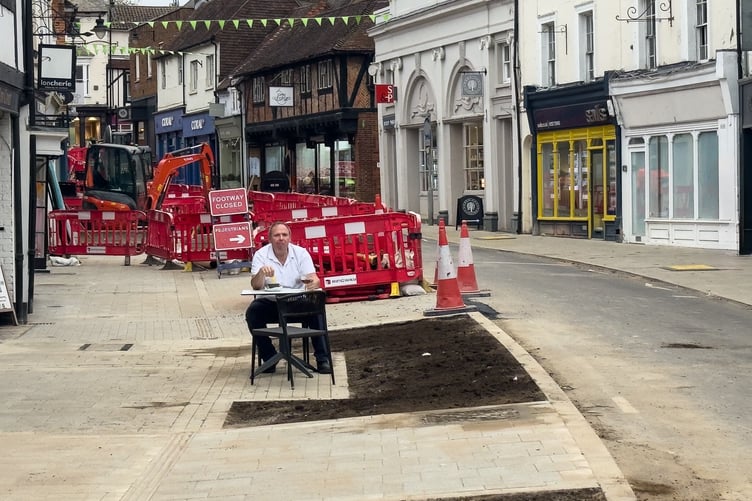It was disheartening to see a recent Facebook photo showing the owner of a local business sitting alone in a deserted Downing Street, with no customers in sight.
Although shared partly in jest, the image struck a chord. It served as a stark reminder of the tough times facing our high street, where four shops have already closed, another is about to, and even the town centre Sainsbury’s site is up for sale.
Meanwhile, there is still more than a year to go before the £15 million Farnham Infrastructure Programme (FIP) pavement-widening project is completed. Wider pavements will no doubt make the town centre more pleasant for pedestrians – but how many will make the journey in the first place?
A Herald article this month quoted a businessman who recently closed his shop asking: “Who would want to come to Farnham when it takes 45 minutes to cross town?”
The problem is clear. Cars dominate the roads, demand vast parking spaces, and yet seven new housing estates are on the way. Without intervention, congestion will only worsen. Disappointingly, local councillors appear to have no clear plan to address it.
Five separate surveys, carried out by different organisations, have shown that many residents would choose to cycle if they felt safe doing so. The results didn’t suggest that most people want to swap their cars for bikes – but a significant minority could make a real difference.
Even a small reduction in car use would ease congestion, creating more space for those who genuinely need to drive.
After several months travelling across Europe this summer, I was struck by the contrast. Nowhere did I encounter congestion as severe as Farnham’s, yet almost every town had an extensive, well-used network of cycle tracks. The connection is clear.
Cities such as Paris and London are being transformed into quieter, safer, more people-friendly environments – the kind of vision the FIP once promised but has so far failed to deliver.
The FIP team claims Downing Street is too narrow for a cycle track – but look again at that Facebook photo and make up your own mind.
Downing Street is set to reopen next week, with most of the new road layout complete. Only pavement widening and planting on nearby streets remain. Soon we’ll see whether the £15 million FIP scheme delivers genuine traffic improvement – or merely broader pavements.
There may be further temporary road closures ahead, but it’s worth remembering that most routes remain open to cyclists and pedestrians. Even during the Downing Street works, cyclists could still pass through – though they occasionally had to dismount and walk a few metres.
Strangely, the councils and FIP team never made this clear to the public, despite repeated requests.
Roadworks inevitably slow vehicle traffic, but they can actually make cycling more appealing. So we encourage residents to try cycling into town – even once – to see if it works for them. It’s a great way to support local businesses, avoid parking fees and help reduce congestion.
And one final tip: cycle about a metre from the kerb. It encourages drivers to give you the safe passing distance required by the Highway Code – something too often overlooked unless cyclists claim their proper space on the road.





Comments
This article has no comments yet. Be the first to leave a comment.